In the Yogic tradition, a great deal of emphasis is placed on the position and movement of hands during asana and meditation practice. These hand gestures are known as mudras. The word mudra is derived from the Sanskrit word “mudh” which means lock or seal. The deliberate positioning of fingers and hands helps direct or seal energy flow thereby allowing the prana or life force to move freely, rejuvenating and healing the body. While foot reflexology has gained much popularity in modern times, it must not be forgotten that the fingers and hands also have more than four thousand nerve endings corresponding to various organs and functions of the body. Various parts of the brain can be stimulated by applying pressure to the finger tips or by curling and pointing the fingers in specified directions.
Although mudras are used extensively by practitioners of yoga, meditation and dance, they can also be a very useful practice in everyday life to optimize health, wellbeing and bring about a state of peacefulness and harmony. Yoga texts feature hundreds of mudras which range from specific healing modalities for particular ailments to ones that promote a feeling of general wellbeing and relaxation. In this article, I am focusing on some mudras which help bring about relief from stress and anxiety.
How to practice mudras
- You can practice mudras at any time of the day or night.
- Find a quiet space where you can sit without distraction for about 20 minutes each day.
- It would be ideal if you could sit in Padmasana, Sukhasana or Vajrasana, with your spine erect and shoulders relaxed.
- It is better to use both hands while doing the mudras to enhance their effect.
- You can hold each mudra for about 12 to 15 breaths and then move on to the next one.
- Move the fingers and hands effortlessly from one mudra to another to resemble a flow.
- Pay attention to your breath and observe how it slows down as your body becomes more and more relaxed with mudra practice.
Mudras for relaxation and stress management
Start with the namaskara mudra. Bring both your palms together and feel the energies circulate through your hands. This mudra represents the interconnectedness of the Universe and beginning with this gesture is a way to honour oneself and our role in the larger scheme of life.
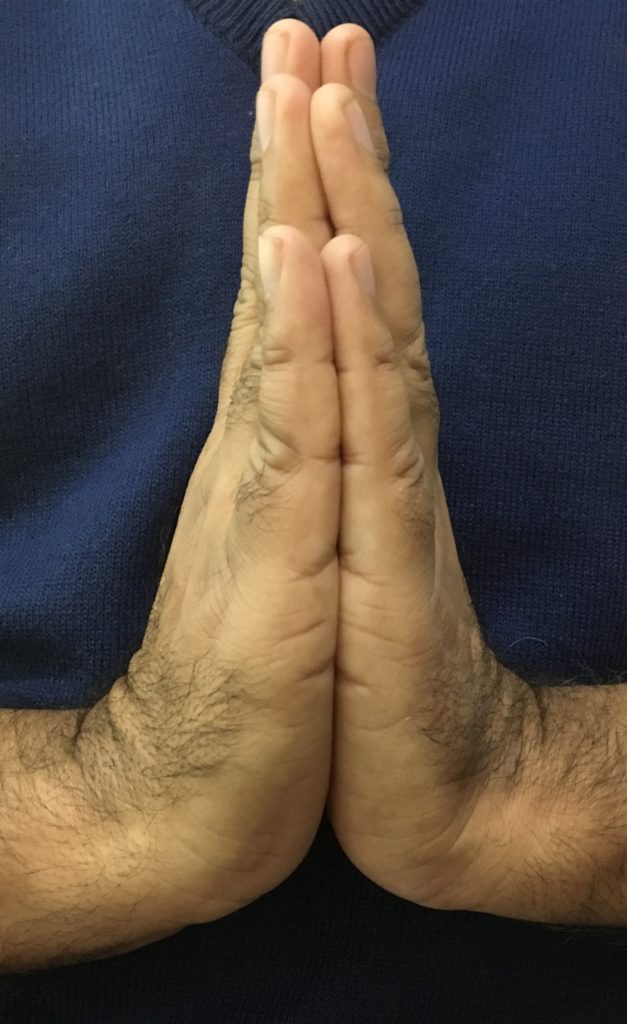
Move into gyana mudra. With your palms facing upwards, press the tip of your index finger to the tip of your thumb. Try to keep the other three fingers straight. This commonly used mudra increases focus and helps bring about deep relaxation. You may rest your palm on your thigh if you wish to feel more grounded.
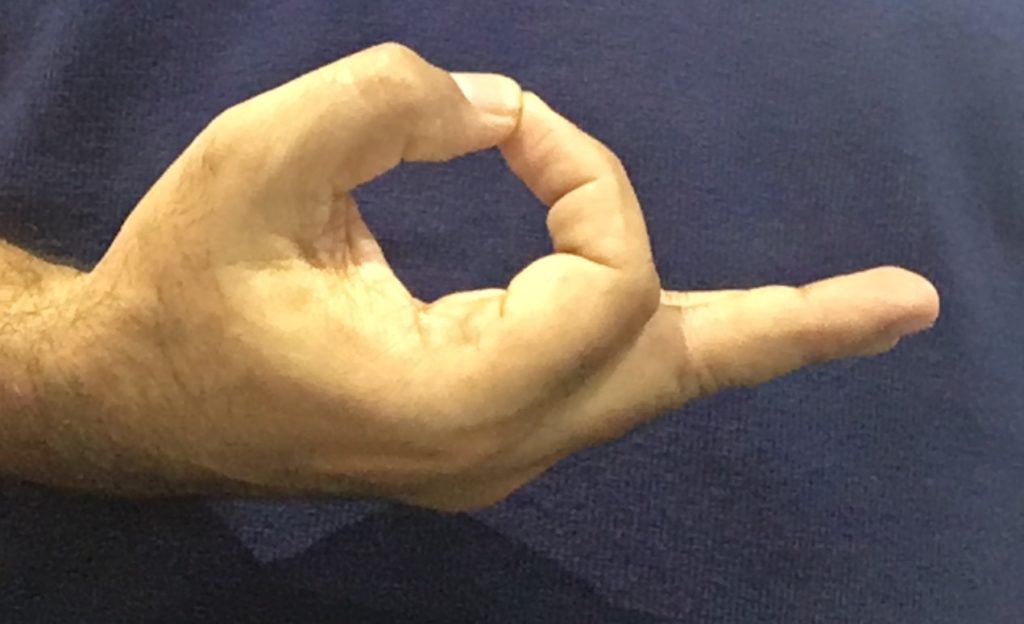
Gently reposition your fingers into the Shuni mudra. Bring the tip of the middle finger and thumb together applying gentle pressure. This mudra helps in bringing about a sense of stability, enhancing patience and calm. This mudra can be especially useful when you feel overwhelmed. It helps you build resilience and support you to complete unfinished tasks.
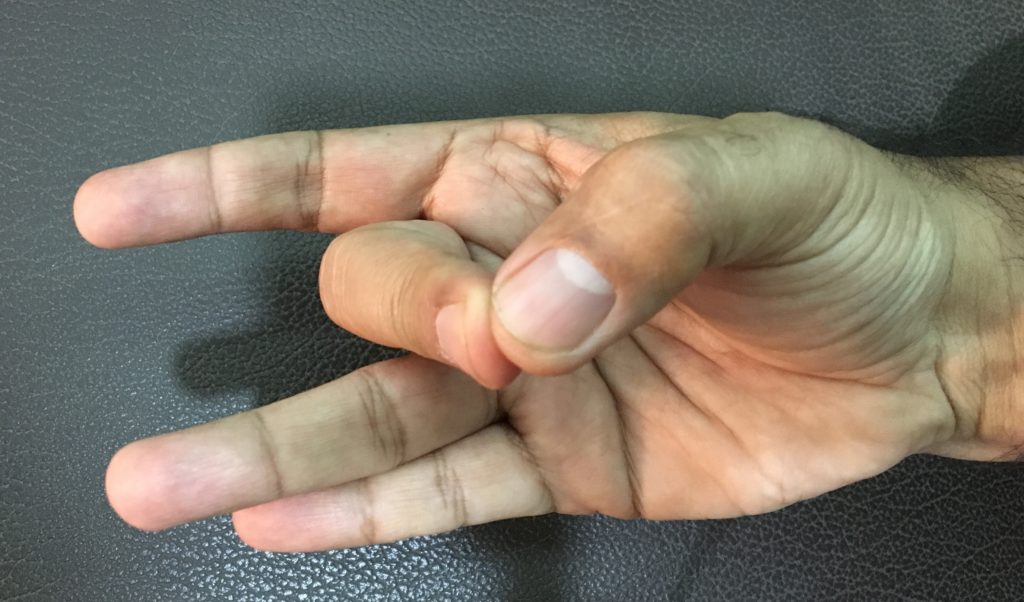
Move your fingers seamlessly into the prana mudra. This mudra activates prana which may be lying dormant in the body. Place the tips of your thumb, ring finger, and little finger together while keeping the other two fingers erect. This mudra encourages the flow prana, making you feel energized and rejuvenated.
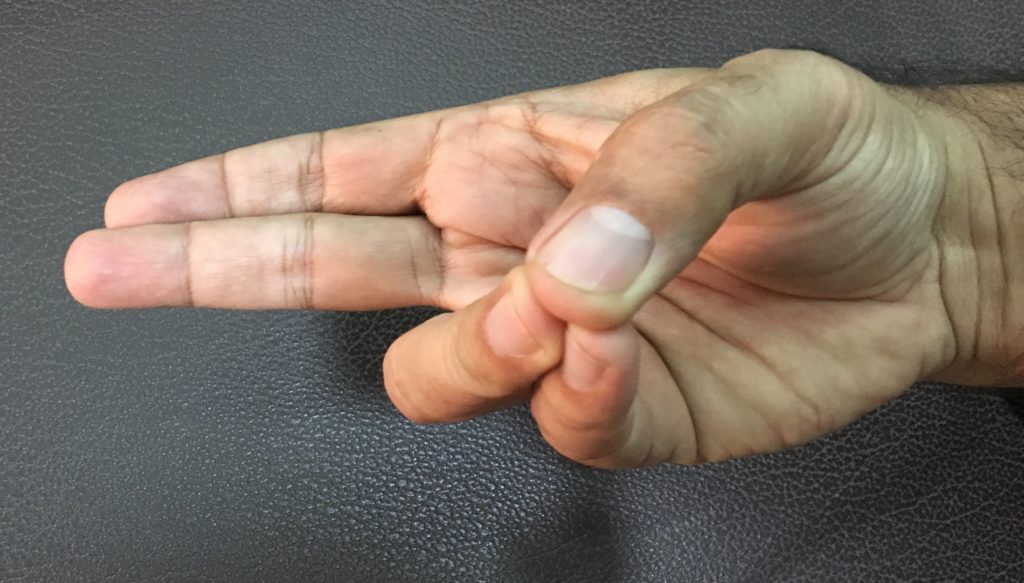
Bring your hands into your lap for the dhyana mudra. With your palms facing upwards, keep the left palm below the right one and touch the tips of your thumbs. This mudra brings about a calming energy and is typically used during meditation as it enhances contemplation and inner growth.

Slowly join the little fingers and ring fingers of both hands. Fold the middle and index fingers loosely over the thumb. Bend the thumb towards the palms. This is the Shakti Mudra. This mudra promotes sound sleep and brings about deep relaxation. It is highly recommended for those suffering from insomnia or anxiety attacks.
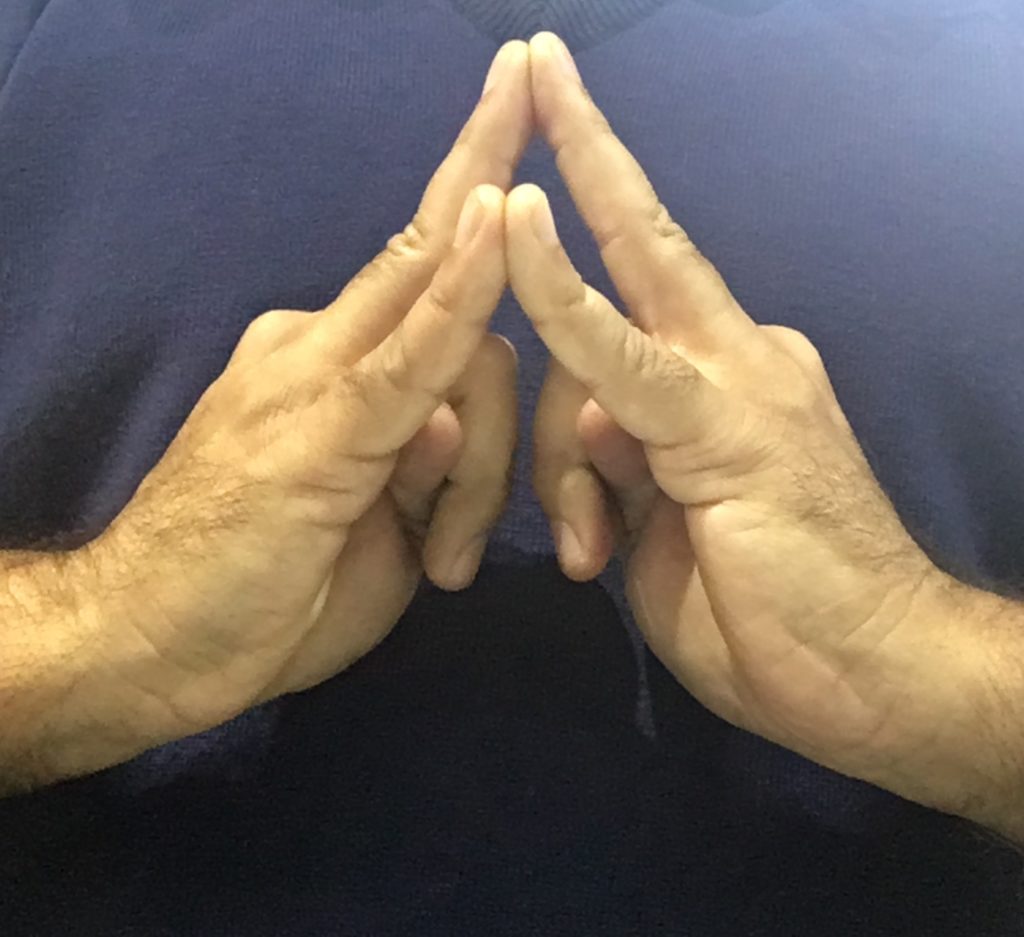
Gently stretch out and place your index fingers against each other and let the other fingers and thumbs rest, interlocking each other. Point the index finger downwards while holding your hands in front of your chest. This is the powerful Kshepana Mudra, whose main function is to draw out all the negative energies from your body and to help let go of all emotions which are no longer necessary to your wellbeing.
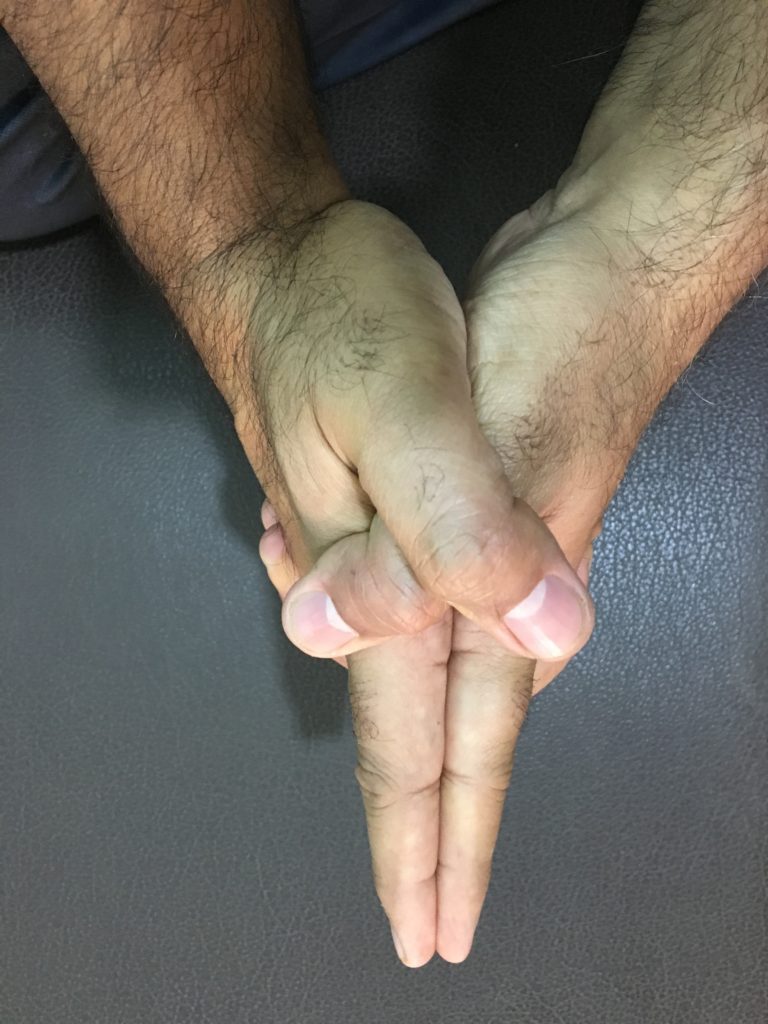
Interlock all your fingers and keep the index fingers and thumbs pointing outward. Place your hands just above your navel and point the index fingers upwards and thumbs downward. This is the Uttara bodhi mudra, often termed as the mudra of enlightenment. It helps to dissipate fears, anxiety and phobias and can be particularly useful before an interview, examination or in stressful or traumatic times.
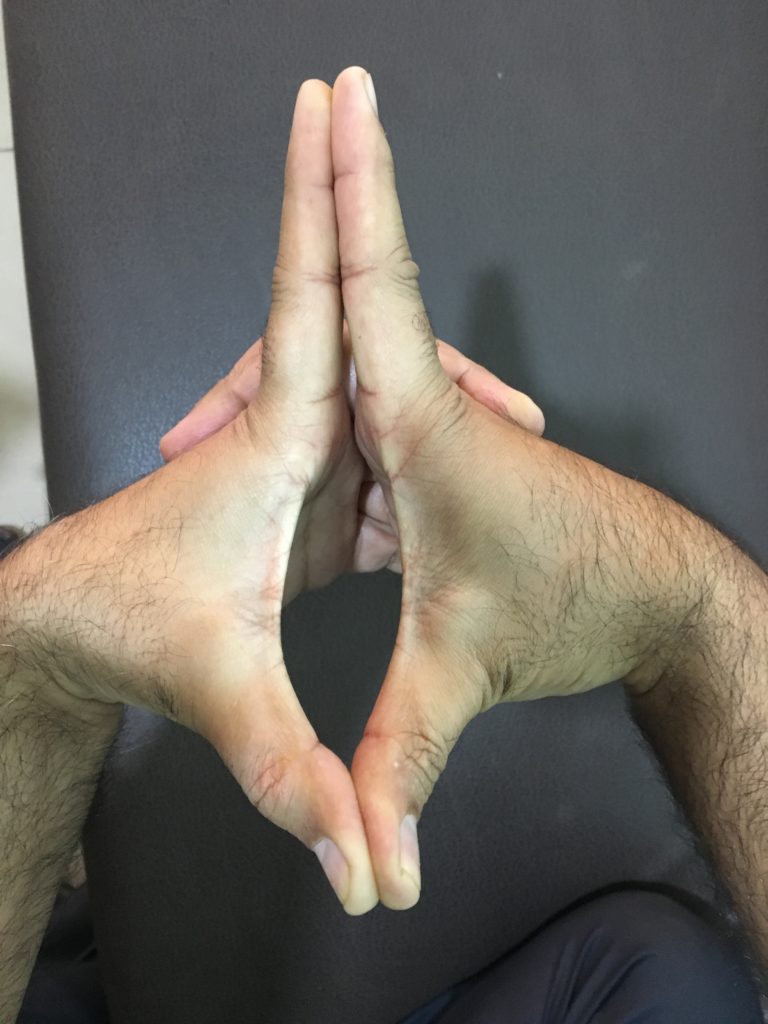
The above mudras can be safely practiced during pregnancy, lactation and while recovering from serious illness or trauma.
Mudras require no special equipment and can be performed at any time or place. You can practice them while commuting or travelling, at your desk or even while watching over your child in a park. Remember to focus on the healing yourself from within when you are practicing. Regular practice of these mudras will help you become calmer, less impulsive and less prone to anger and anxiety. You can use the power of the ancient science of mudras to help heal any specific ailments that you may be suffering from or just practice them to prevent illness and promote a better sense of wellbeing.
463 total views, 1 views today

